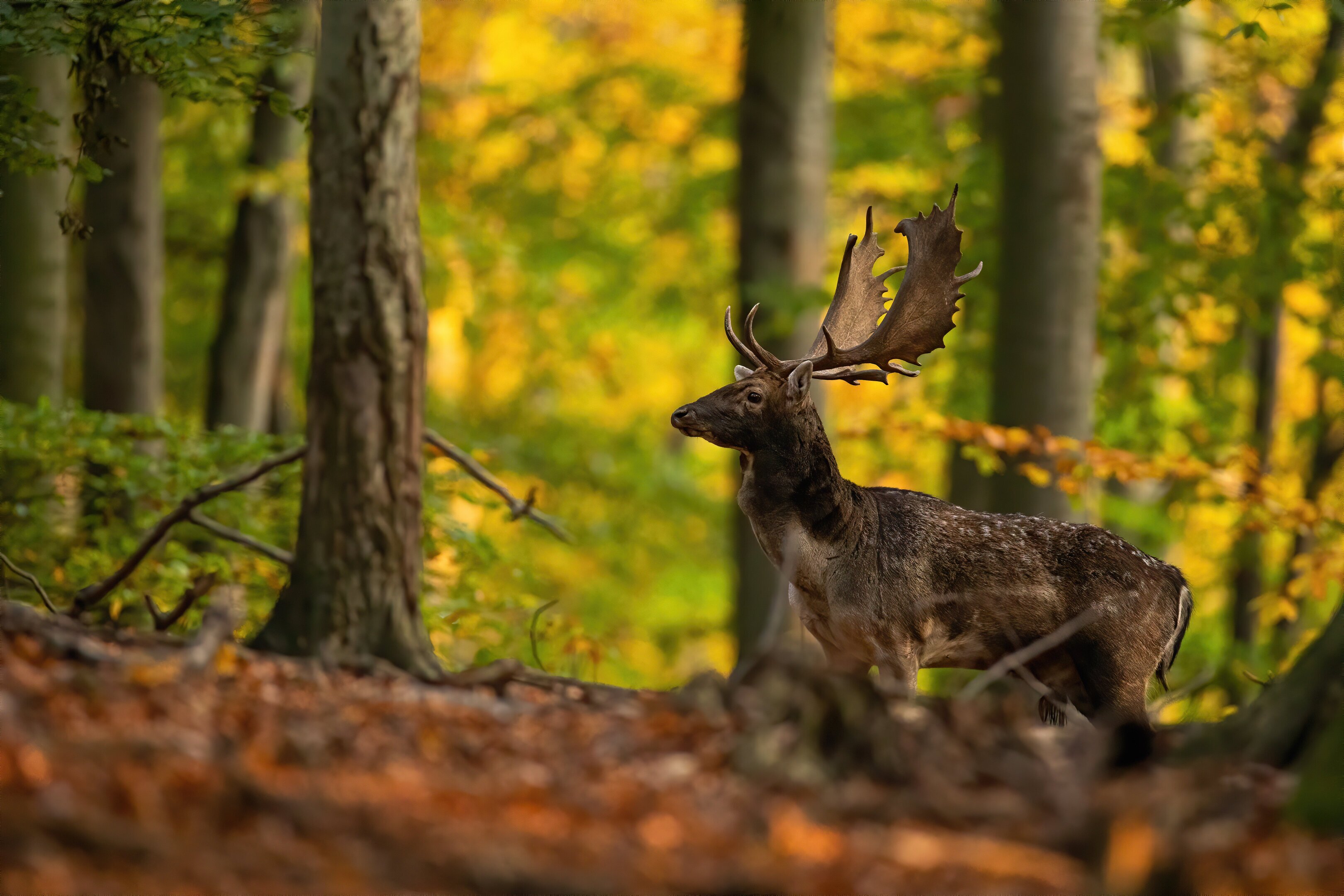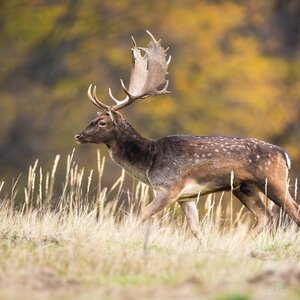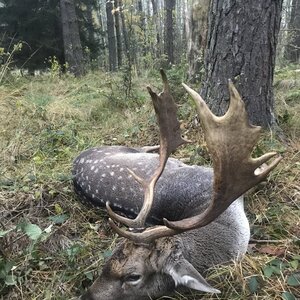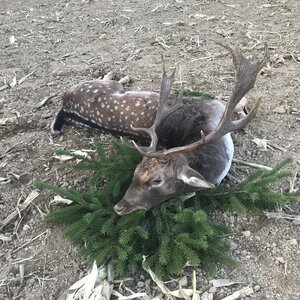
Hunts

Fallow deer in rut
The rutting season of fallow deer begins in mid-October and lasts for 3 to 4 weeks. During the rut, fallow deer emit a deep, rugged sound that can be heard up to a distance of 500 meters.
Deer during the rut start migrating to rutting sites that they have occupied in previous years, remaining faithful to their rutting places. These locations are usually found in open spaces such as meadows and in tall stands of deciduous trees. The fallow deer is typically accompanied by a group of cautious females at the rutting site.
Older fallow bucks engage in rutting battles, during which the antler branches can be broken. On the outskirts of the rutting site, younger fallow deer move about and often engage in fights among themselves. The clashes of their antlers can be heard from a great distance. Rutting does choose a fallow buck with which they will mate.
During the rut, you can observe the fallow deer digging shallow pits in the ground where they typically cool off and rest.
Luring
Fallow deer can be lured using a call that imitates the rutting roar of a fallow buck.
To successfully lure, one must know the right places for stands and animal locations during the rut, master the art of concealment, understand wind direction, be familiar with the behavior of the animals, and, most importantly, be able to perfectly imitate the animal's call.
Hunting period
October 15th - November 15th
The peak of the fallow deer rutting season occurs on October 25th.
Biology
Fallow deer inhabit areas similar to their original homeland in the Mediterranean and southwestern Asia, which consist of sparse deciduous forests interspersed with open areas for grazing. They are also common in coniferous forests, from where they venture into fields for food. They are active during the day and enjoy basking in the sun on meadows and clearings.
Their diet composition changes with the seasons. In spring, they graze on emerging vegetation, in summer they prefer the leafy parts of plants, and they readily consume cereal crops when they are in the milk or ripe stage. In the fall, they intensively collect seeds and fruits from trees, shrubs, grasses, and herbs. In winter, they browse on the twigs of shrubs and trees and the remains of dry vegetation.
.jpeg?locale=en)







.jpg?locale=en)
